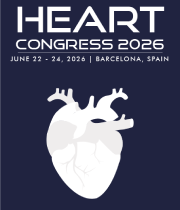Title : Modeling human heart development and congenital disease using an iPSC-based 3D bioprinted model of embryonic human heart
Abstract:
Human cardiogenesis is a finely orchestrated process that involves dynamic genetic and morphological changes. However, the cellular and microenvironmental processes underlying the human heart development remain obscure, due to limited access to human heart in utero and the lack of effective experimental models. Advances in 3D bioprinting, perfusion bioreactor, and stem cell technologies have enabled the fabrication of cardiac tissues with complex structures and microenvironment, and their dynamic in vitro culture. Here we present a perfusable 3D bioprinted model of embryonic human heart tube (day 22), consisting of endocardium, cardiac jelly, and myocardial layers. We use human induced pluripotent stem cell-derived cardiomyocytes (hiPSC-CMs) and endothelial cells (ECs), derived from healthy donors versus hypoplastic left heart syndrome (HLHS) patients, to cellularized the bioprinted heart tubes. Full endothelialization of the heart tube cavity, progression of myocardial tissue compaction and global contractile function demonstrated robust viability and cardiac function/maturity of the engineered heart under dynamic flow culture. Further, single cell RNA sequencing revealed a promoting effect of the dynamic flow on cardiac tissue maturation and cell lineage commitment. Comparison of sequencing data in pre versus post flow culture identified heterogeneous CM and EC subpopulations, relating to the key developmental processes during linear heart tube stage (day 22). We also identified noticeable differences in the readouts obtained from the healthy versus diseased (HLHS) cell sources in the 3D constructs. Overall, this study establishes a perfusable model of human heart tube with robust function and relevance to the early developmental stages. Cellular activities related to cardiogenesis upon hemodynamic flow activation were observed, suggesting the great capacity of the 3D bioengineered model for studying cardiogenesis, disease, and prenatal therapeutic targets.
Audience Take Away
- The audience will learn on the latest applications of advanced tissue biomanufacturing (3D bioprinting) and perfusion bioreactor technologies to create highly complex in vitro models of the human heart
- The key outcomes of this work could inspire researchers in further developing more complex in vitro models to study heart development and congenital heart disease
- Several lessons learned in this study could be also utilized as teaching/educational materials to be taught to the students in the classroom or clinical training settings
- The biomanufacturing and testing workflow developed here could be further expanded and adopted to other developmental stages of prenatal human heart, as well as postnatal stages, to study a wide variety of physiological and/or pathophysiological processes



